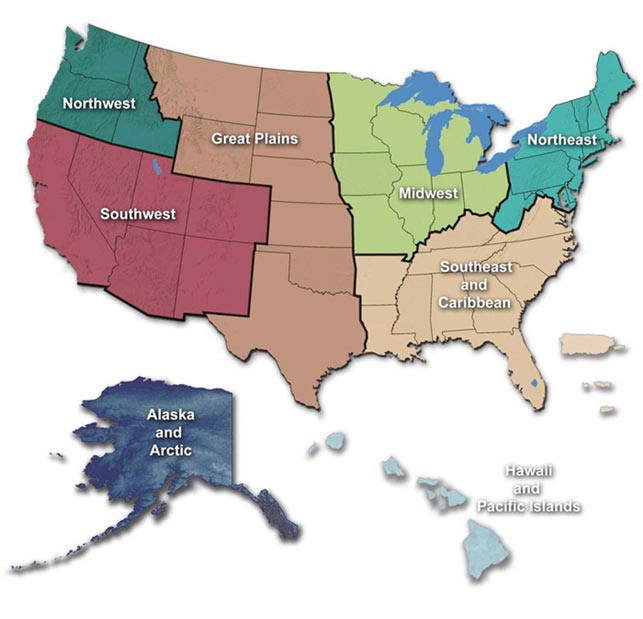
The eight US National Climate Assessment regions.
A nine-part report, led by NCA Technical Support Unit (TSU) lead scientist Kenneth Kunkel, has been produced as input to the Third National Climate Assessment. The report contains two components for eight regions of the United States and the contiguous U.S. The first component is a description of the historical climate conditions in the region; the second component is a description of the climate conditions associated with two future pathways of greenhouse gas emission based on IPCC emission scenarios.
The historical climate conditions are meant to provide a perspective on what has been happening in each region and what types of extreme events have historically been noteworthy to provide context for assessment of future impacts. The future climate scenarios are intended to provide an internally consistent set of climate conditions that can serve as inputs to analyses of potential impacts of climate change. The report contains many figures to illustrate the above components, produced by Laura Stevens and other CICS scientists in collaboration with climate experts from each region.
As part of a sustained assessment approach, this report will be updated as new model results are available and as new climate scenario needs become clear. It is also hoped that this research is of direct benefit to decision makers and communities seeking to use this information in developing adaptation plans.
Kunkel, K.E, L.E. Stevens, S.E. Stevens, L. Sun, E. Janssen, D. Wuebbles, and J.G. Dobson, 2013: Regional Climate Trends and Scenarios for the U.S. National Climate Assessment. Part 9. Climate of the Contiguous United States, NOAA Technical Report NESDIS 142-9, 77 pp.
